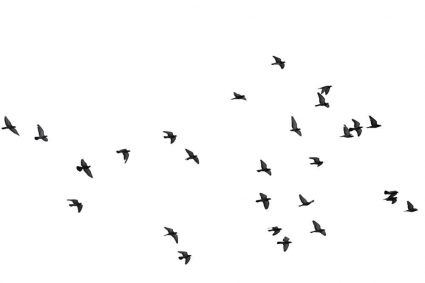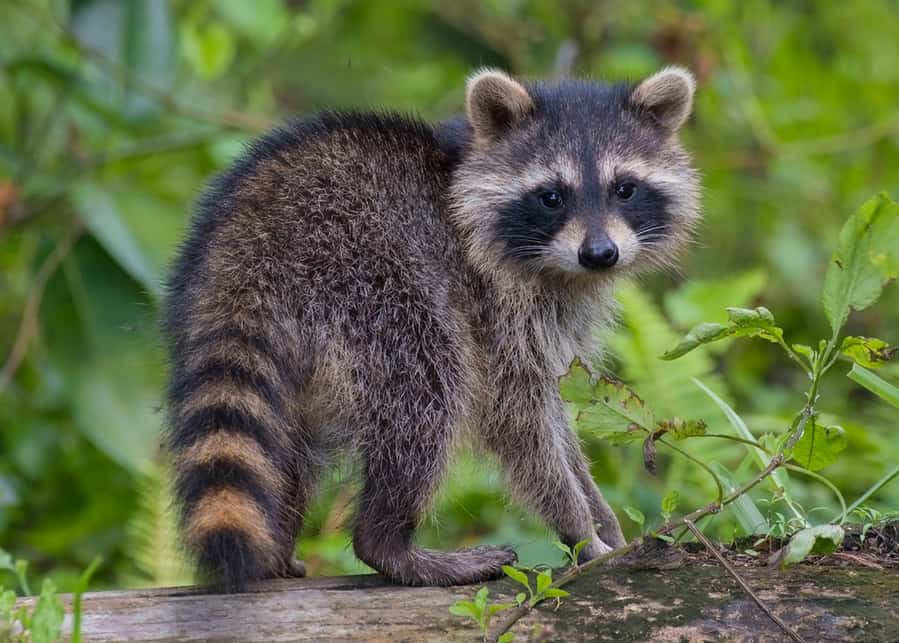
Pumpkins are nutritious and super tasty, whether roasted, in soups, fried, or baked.
Perhaps you planned to share your homegrown pumpkin at a barbecue when you planted pumpkins in your garden. Only to notice raccoon footprints that lead you to hollow pumpkins.
The name raccoons may bring a charming image to mind, yet these furry animals are some of the most destructive.
Raccoons are not social animals but are intelligent and naturally good at solving problems.
They are also nocturnal, and it becomes difficult to protect your vegetables when these furry pirates attack in the wee hours of the night.
Pumpkins grow on vines spread across the ground, making them easily accessible to land animals and insects.
Nurturing and growing these plants is only half the job. When you have to consider keeping them safe from opportunistic animals like raccoons, the real battle begins.
The most effective measures are all about preventing these animals from getting on your property. Sometimes all you need is to build a fence, but other times, you may have to get more resourceful and combine other measures that include:
- Using natural deterrents.
- Building cages.
- Installing lights that illuminate the dark corners of your garden.
Raccoons are clever, but that doesn’t make them invincible.
This post will outline practical steps to keep these omnivores away from your growing pumpkins.
7 Ways To Keep Raccoons Away From Pumpkins
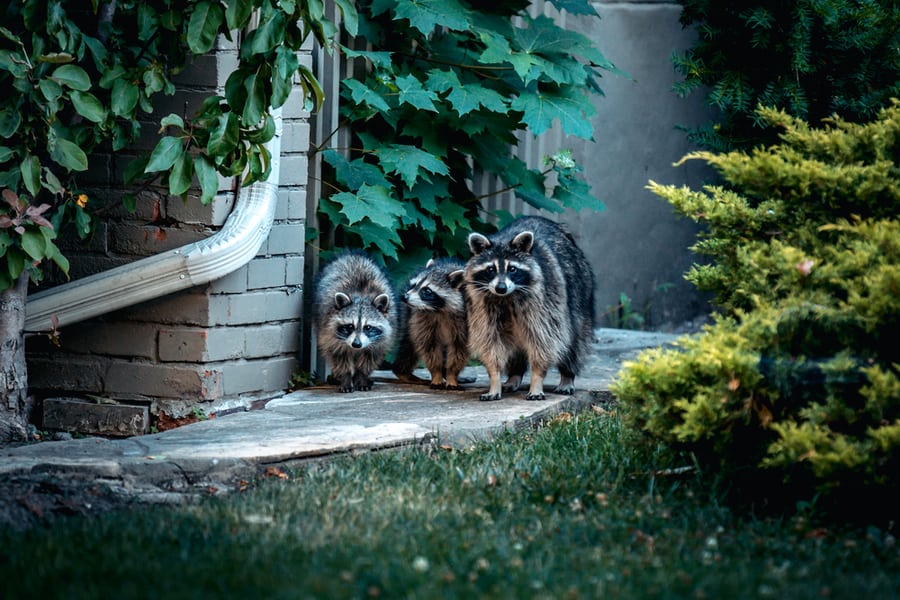
Dealing with mischievous raccoons in your garden and yard is frustrating, but you can keep them away with knowledge and patience.
Effective measures to take include:
1. Building Pumpkin Cages

A cage is a wire structure that encloses each pumpkin. You will need the following:
- A 1/4″ to 1/2″ hardware cloth
- Snippers that can easily cut through the wires
- Thick gloves to handle and cut your hardware cloth without getting poked
Step #1: Cut the hardware cloth into squares big enough to wrap your mature pumpkins around and yet fold up on either end.
Step #2: Bring both sides of your wire square together to form a cylinder-shaped fold. To secure the cylindrical shape, connect the two sides of the wire square using a metal string.
Step #3: Cut 3 or 4 straight lines starting from the outer border of each end of the wire square after you have divided it in half and fixed it in place. Make folds or flaps that can fold up on each end of the wire cage to cover the pumpkin on all sides.
Step #4: Fold up every flap on one side of your pumpkin cage and fasten each with a metal string wire. Leave the opposite side of the cage unlocked to place your pumpkin inside through the opening.
Step #5: Place your pumpkin into the cage’s open end. Making sure not to harm the plant stem attached to the pumpkin, fold up the final pair of end flaps and fasten them with metal string wire.
Caging individual pumpkins is a popular and effective defense technique that allows your pumpkins to grow to maturity while keeping the raccoons out.
2. Using Nets
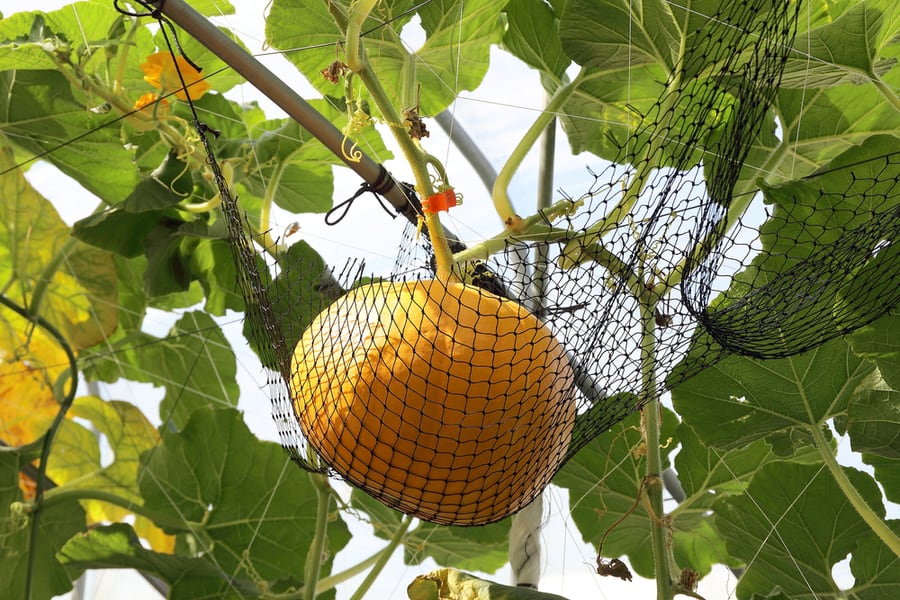
Netting can keep birds, insects, and most animals, including raccoons, out of growing crops.
You will require a thick mesh of 0.4-0.8mm to prevent these omnivores from tearing/chewing it and keep them away. Also, have enough netting to cover a large area because pumpkin vines are prone to sprawling over the edge of the garden bed.
Cover the entire plant by measuring the area your pumpkins occupy. Plants growing on the ground cannot have netting covering them. You will require a frame to hold your net, and you can create one or buy specific hoops for this use.
Next, use zip ties to join the frame in the netting. Raccoons cannot access your pumpkins once you cover them with nets.
3. Installing Sprinklers
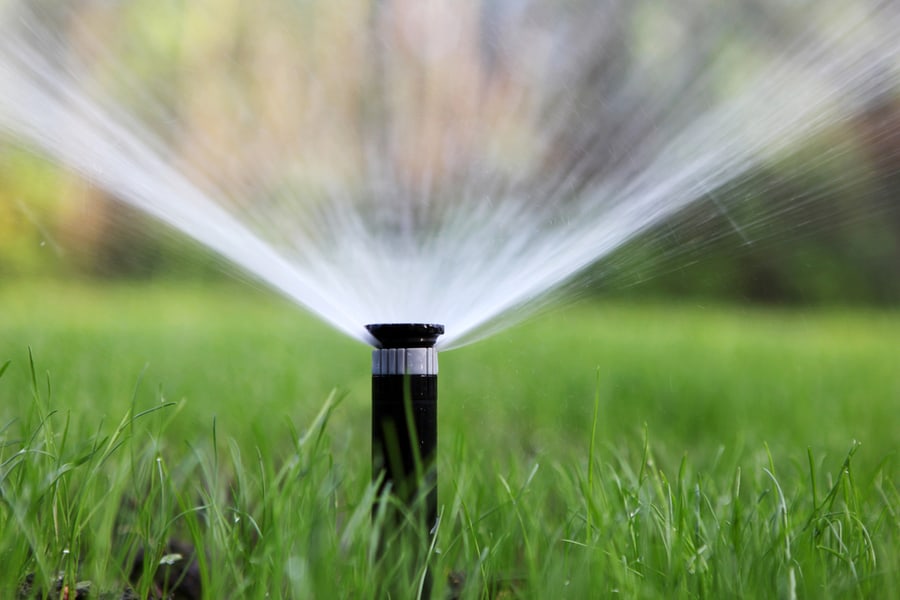
Install a sprinkler system in your garden or yard to drive raccoons away from your property.
Turning your sprinkler on, especially at night, not only helps to keep your plants moist but also scares raccoons and keeps them from coming close.
4. Fencing the Yard

You can protect your garden or yard from a raccoon invasion by fencing. Wire mesh and wooden fencing are among the least-priced solutions, but these options have drawbacks.
Since raccoons are persistent and determined, wooden fences are easy to climb over or even vulnerable to digging. Installing electric fences is the best way to keep these omnivores out of your yard or vegetable garden.
You must install one or more strands of electric fencing at least 8 inches (20.5 cm) above the ground and 6 to 8 inches (15-20.5 cm) from the fence.
To avoid digging, you might bury the fencing at least 6 inches (15 cm) deep and 30.5 cm outside the ground. You can turn it on at night and off throughout the day.
5. Installing Movement Detectors and Bright Lights

Since raccoons dislike doing business in the open, you can add motion sensor floodlights to prevent their nighttime plundering.
Place the lights in strategic positions to illuminate your garden and yard.
Raccoons will not try to invade and will find it hard to stay if the light illuminates the dark places.
6. Making Your Yard Less Inviting

If your home is the same compound as your garden, you can make it less appealing to raccoons by following these steps:
Get Rid of All Food Sources
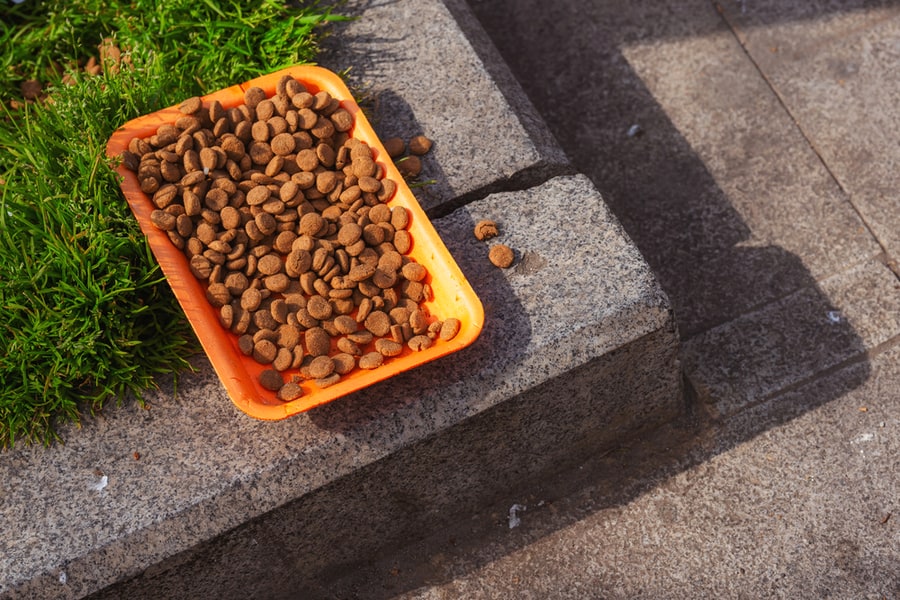
Raccoons have a remarkable ability to find food, no matter where it is.
Exposed food sources, such as pet food or food in bird feeders, are nothing less than an open invitation for them to enter your home.
Therefore, by keeping these food sources away from your home, raccoons will have no reason to come over.
Limit Access to Water
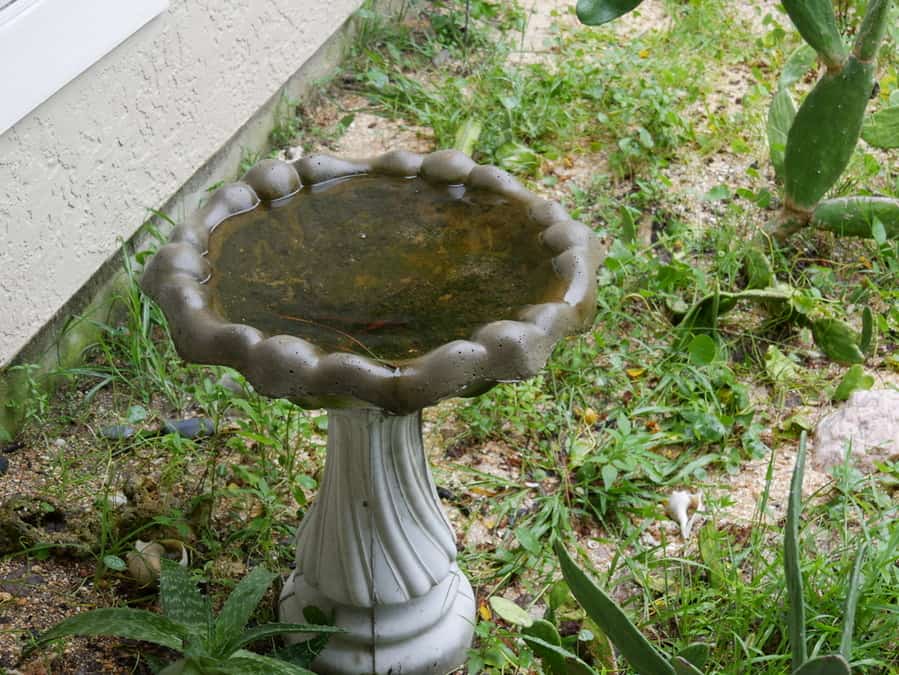
Why offer water to raccoons when they need it to survive?
Raccoons will drop by, searching for water to drink and stay clean.
Prevent their visits by covering indoor water features like your pool or bird feeders.
Besides attracting them, raccoons contaminate water bodies with diseases that spread through their feces.
If you remove their water access, they will have fewer reasons to come around.
Dispose of Waste Appropriately
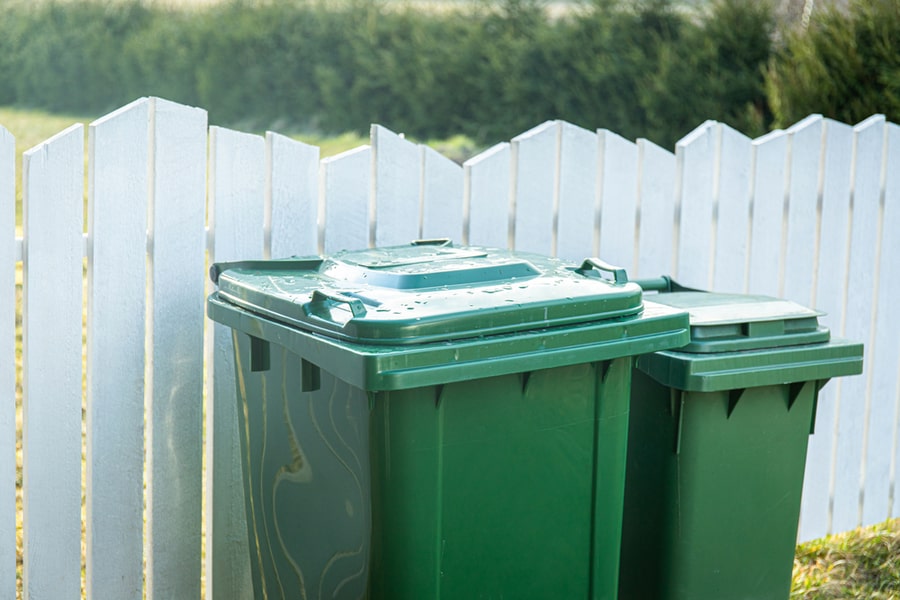
The smell and sight of exposed food in trash cans attract raccoons who will keep coming to your property.
Raccoons have nothing to eat in clean and empty garbage cans, and it is essential to eliminate waste as often as possible.
Use trash cans with locking lids to cover the bins if you cannot empty the trash daily.
Close Entry Points
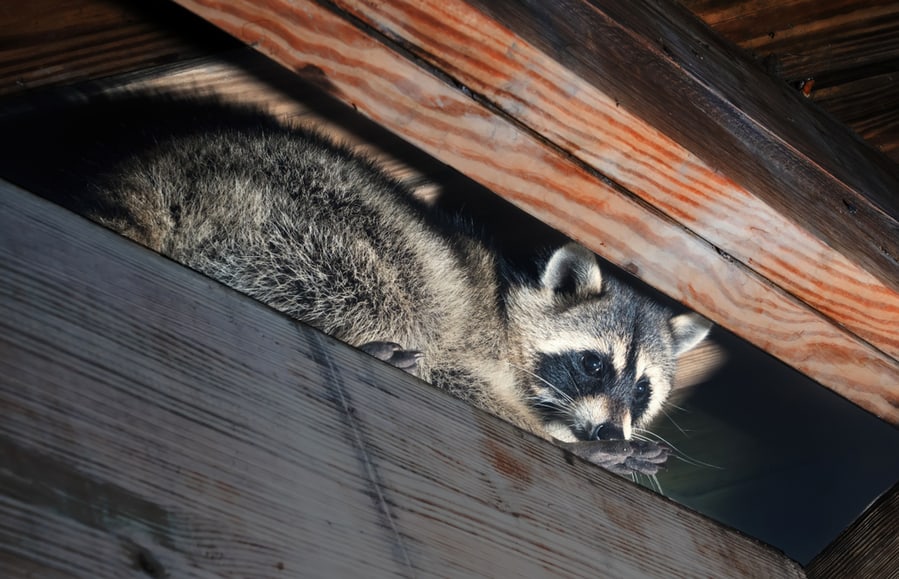
Raccoons can enter your compound through wide cracks, gaps, and other openings on your property.
It is best to keep them off your property, and you can prevent them from entering by sealing all entry points.
You should also inspect your attic, roof, open vents, and chimney for any cracks or holes.
Maintain a Neat Yard
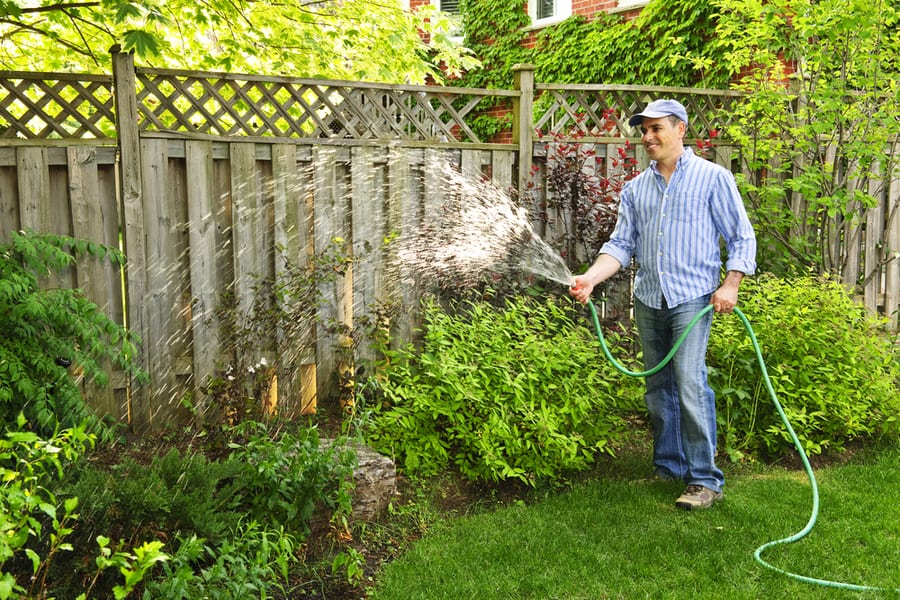
You can eliminate raccoon nesting sites by clearing wood piles and overgrown shrubs in your yard.
Restrict access to your roof by trimming any hanging branches, ensuring a 5-foot space between them and the tree.
Also, remove trellises and arbors that give raccoons easy access to your roof.
7. Use Natural Deterrents

Raccoons have keen senses of taste and smell and rely on their skilled paws to guide them to food sources.
You can deter raccoons from your garden by offending their sense of smell, taste, and touch with the following:
Ammonia

Raccoons dislike the strong scent of ammonia, and you can use this to your advantage.
Spray ammonia close to the garden region, on trash bins, and on entry points that raccoons use to access your compound.
Vinegar

Raccoons don’t enjoy the scent of vinegar, which makes it a powerful natural repellent that can help you keep them at bay.
Pour some vinegar around your trash bin or on clothes, and then place them where raccoons frequently appear.
An even better approach is dilute vinegar in a spray bottle and spray it all over your garden to keep them away.
Garlic and Onion
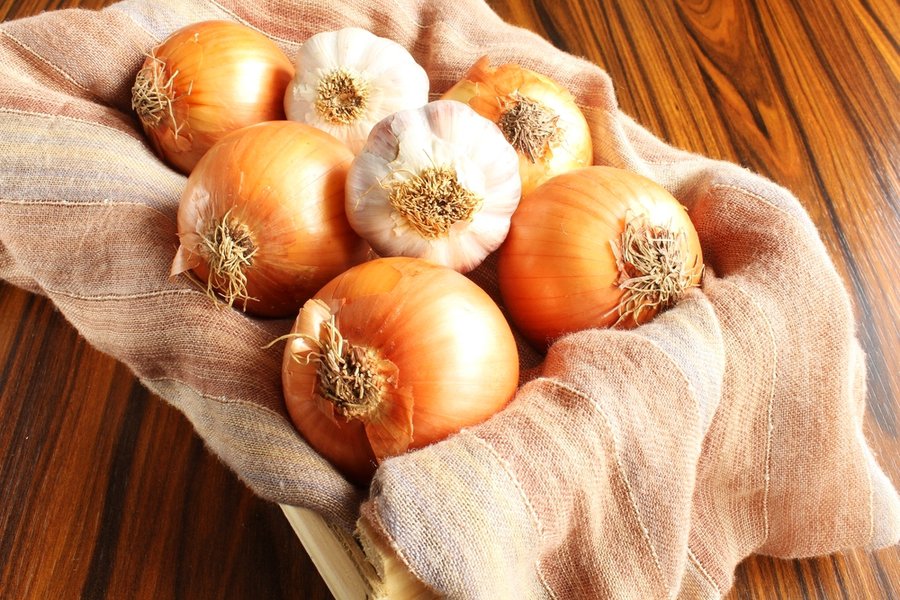
Another natural repellent you may use is garlic because of its potent smell, which irritates raccoons. Mix chopped garlic with chili powder and sprinkle this mixture around the garden.
Raccoons will immediately flee after coming into contact with garlic.
The combination of garlic and onion also creates a strong repellent that you can use to chase raccoons out.
Slice garlic and onion, boil it, and apply this solution to the garden or areas where these animals hide.
You can also grow garlic and onions next to your pumpkins.
Cayenne Pepper
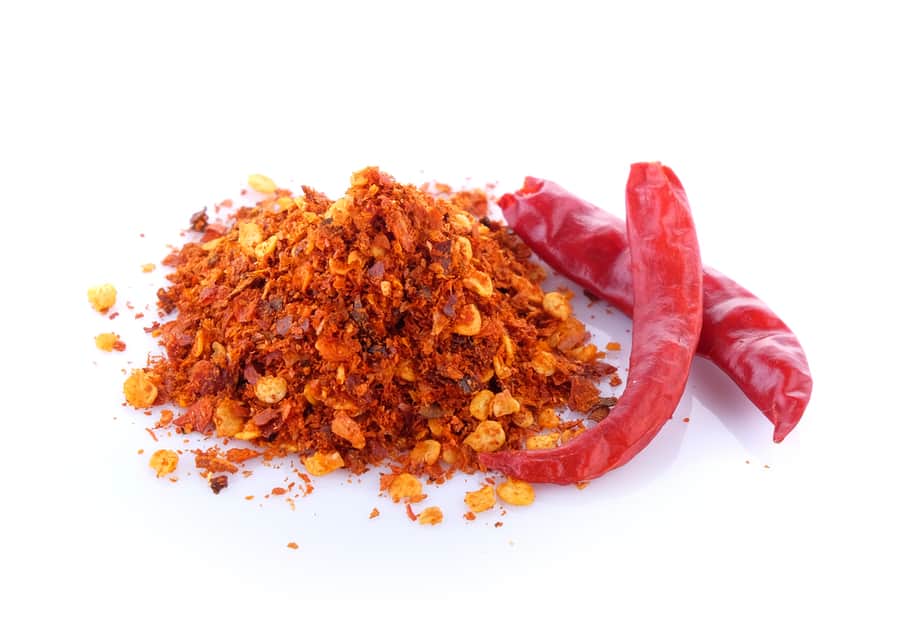
Cayenne is a potent natural deterrent that keeps raccoons away.
Add water and habanero chilies to a cup of cayenne peppers and boil them. Cool and strain it on a spray bottle.
Spray this mixture everywhere you spot raccoons, especially on pumpkins, around your trash cans, and on entrances.
Salt

Salt, especially Epsom, is an excellent natural repellent that wards raccoons off your property.
Sprinkle it throughout your garden, yard, and other areas where these animals nest.
They will find the smell quite repulsive and avoid locations where you apply it.
Cucumbers

Raccoons will avoid your garden if you cultivate cucumbers since they don’t enjoy the smell.
You can also cut up cucumbers and scatter them around the garden, on their entrances, and in places like your house on the roof or attics.
Conclusion
Raccoons have their place in the wild and should be nowhere near your home.
The smell of your plump pumpkins is attractive to them, and they will not want to leave once they discover them.
Finding spoiled pumpkins lying around the garden is uninviting. A recap of the best ways to stop these animals is:
- Building pumpkin cages.
- Using nets.
- Installing sprinklers.
- Fencing your compound.
- Making the yard less inviting.
- Using natural deterrents.
A bountiful harvest and a raccoon-free garden are all we could ever ask for. By considering these steps, you will achieve them in no time.
Frequently Asked Questions
What Section of Pumpkins Do Raccoons Like?
The presence of raccoons makes your pumpkin farm anything but insecure. Raccoons will attack and devour pumpkins once they have access to them.
They do not immediately pursue the pulp like other animals. Instead, they tunnel into the ground and decimate the entire plant from the top down.
The plant dies instantly since they damage the roots. So, even before you harvest your pumpkins, raccoons will have already destroyed them.
How Do You Know if It Is a Raccoon Digging Up Your Plants?
You may not always see them, but raccoons always leave some trace of their presence, especially in the garden.
Apart from their unique five-toed paw prints, other signs that a raccoon has been in your garden include:
- Fecal droppings that they leave while feeding.
- Scratches on fences and trees.
- Evidence of looted garbage cans.





